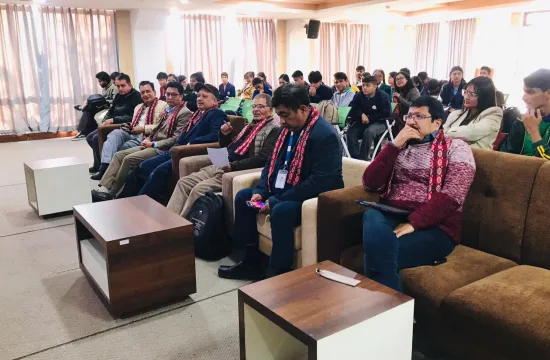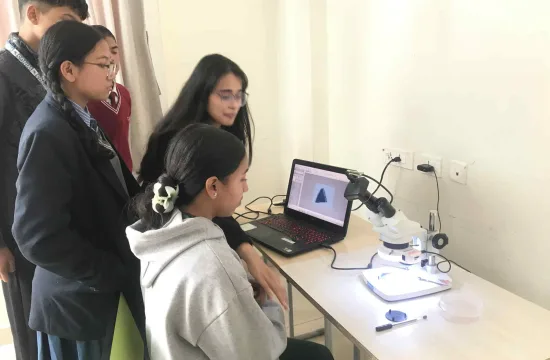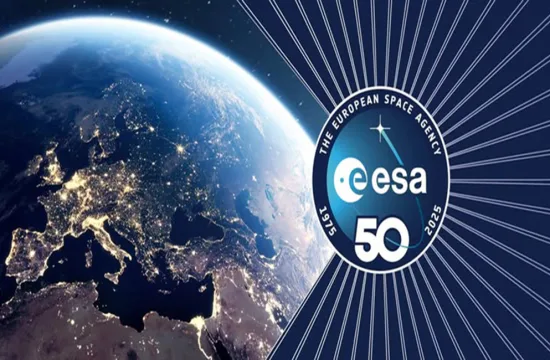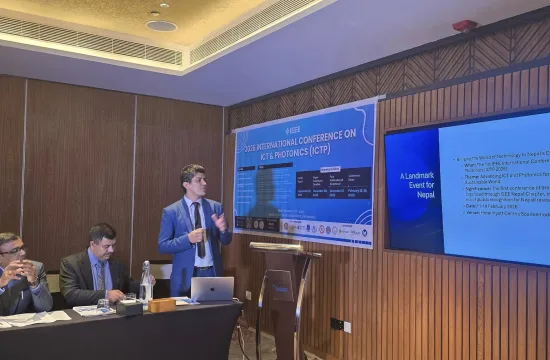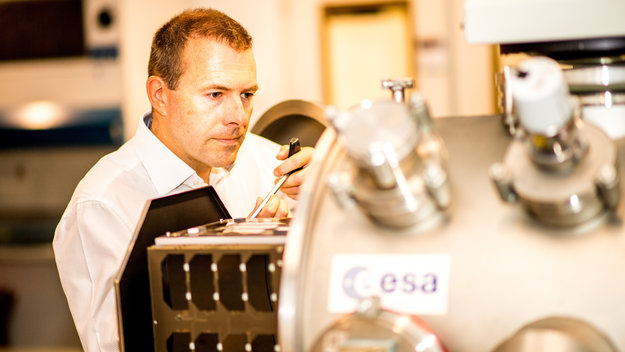
CubeSats started as a tool for education. Profs Jordi Puig-Suari of California Polytechnic State University and Bob Twiggs of Stanford University wanted students to gain hands-on experience in designing, making and flying nanosatellites, but they needed to do it cheaply.
That led them to the PC/104 computer standard, with rugged, stackable electronics boards with commercial components to fit within a 10x10x10 cm box (or unit). A container was developed as a standard interface for launch vehicles, with a spring-loaded ‘jack in a box’ deployment system to push out three CubeSats at a time into space. That in turn inspired the idea of a single 3-unit CubeSat, packing in added technology and a payload. The CubeSat standard was born. Within their budgets for the first time, many university engineering facilities worldwide then embraced the concept and gave the chance for students to build something to actually fly in space – how cool is that?
ESA’s involvement with CubeSats started in 2006, when I was working at the Education Office. There was an opportunity to embark educational CubeSats on the maiden flight of our new Vega launcher. The agreement was signed with the Vega project in 2007, and that led in turn to the first European CubeSat symposium in early 2008. Vega launched seven separate 1-unit CubeSats in the end. Different European universities designed, manufactured and tested the CubeSats and we supported their engineering work, verified their suitability for flight and procured their deployment systems.
The 2012 launch saw these CubeSats meet with mixed operational success – only two worked for a long period, three for a few weeks and contact was lost with a couple. But they were all successes in educational terms, of course. When universities make a CubeSat for the first time then there’s maybe a 50/50 chance of failure, but for second and third times it’s a lot lower. And the student teams responsible for those pioneer CubeSats formed spin-off companies after graduation.
These companies have grown exponentially since then, employing dozens of people, manufacturing multiple CubeSats annually as the market has expanded greatly with not only universities, but also government agencies and commercial service start-ups now utilising them.
ESA’s involvement with educational CubeSats continues to this day and this remains very important, but it was clear back then that CubeSats held wider potential – quick and cheap to develop and launch, they offer an ideal platform for demonstrating promising new technologies. So that’s my current role within TEC, bringing together technology companies and research institutes with CubeSat companies.
We group payloads together synergistically so each technology CubeSat is more than the sum of its parts. For instance, GomX-3 – our first mission to fly – combined a receiver of ADS-B aircraft signals with a system to map signal quality from telecom satellites, 3-axis pointing control plus an X-band transmitter for rapid data download. Another CubeSat, QARMAN, is focused on reentry technologies and is scheduled to launch later this year. We have another four technology CubeSats in development currently.
If our really big satellites resemble mainframe computers, and standard satellites are PCs, then CubeSats equal smartphones – highly compact and portable, integrating miniaturised sensors with powerful but low-power computer processors and software radios. Here on Earth, aerial drones are exploiting the same technologies as CubeSats and pushing the boundaries of autonomous flight systems, so I like to think that CubeSats have the potential to become the autonomous drones of space. For instance, we’re looking at similar concepts for CubeSats such as autonomous navigation, close proximity operations, swarm formations as well as on-orbit inspection and assembly techniques, the latter to build up larger structures from basic building blocks.
And as well as flying in new ways, we want to fly CubeSats to new places –we’ve been looking into deep space missions, and are planning later this year to invite concepts for lunar CubeSats in support of exploration objectives.
I’m continually impressed by the sheer creativity involved in miniaturising systems to put them in these small boxes – instruments, propulsion systems, radios… European industry and research labs are pushing ahead rapidly with developing new products and we are helping them to get those products into orbit as quickly as possible, so they can maintain a competitive edge.
Each technology CubeSat project is managed to a standard engineering and product/quality assurance approach with a tailored version of the ECSS standards for CubeSats, focussed on managing risks and maximising probability of mission success within the limited financial budgets. Along with access to the Agency’s technical expertise and facilities, this allows us to offer significant added value to Member States funding these small innovative missions within our Technology Programme.



